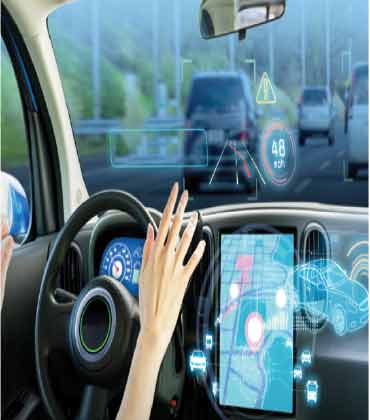Thank you for Subscribing to Auto Business Outlook Weekly Brief
Auto Business Outlook: Specials Magazine
On a busy and cold Monday morning, Sarah was scheduled to give a promotion-worthy presentation at work when she found herself in a bit of a bind. Her sedan parked in her snowy driveway refused to start. Uncertain of what to do, Sarah rifled around her glove box and found an old motor club ID card - a program she stopped paying for years ago when she realized she never used the $100 a year service. She dialed the 1-800 number wondering if they could help and just how much it was going to cost her.
CXO INSIGHTS

The Race for Market Leadership in the Electric Vehicle Business
Bruno Ahrens, Vice President And General Manager, Business Unit Electrified Powertrain, United Autom

The Revolutionary Impact of Electric Vehicles (EVs) on Automotive Suspension Technology
Mahmoodreza Forootan, Researcher, And Alireza Masrour, General Partner, Plug And Play Tech Center

Securing The Future Of Vehicular Automation
Maxime Mackieh, Head Of Cyber Security, Punch Powertrain
IN FOCUS
Driving Confidence: Prioritizing Safety and Security in the Auto Industry
Maintaining high standards in manufacturing processes and quality control is crucial for ensuring the safety and reliability of vehicles.
Driving Towards a Safer Future: Innovations in Safety Transform the Auto Business Landscape
Innovations in safety technology are ushering in a transformative era for the automotive industry.
EDITORIAL
Advancements inDriver Safety
In recent years, the landscape of driver safety has undergone a remarkable transformation, driven by technological innovations, policy changes, and a growing awareness of the need for proactive measures to prevent accidents and save lives. From advanced driver assistance systems (ADAS) to the integration of artificial intelligence (AI) and machine learning algorithms, the latest developments in driver safety are not only enhancing the driving experience but also revolutionizing the way we approach road safety. One of the most significant advancements in driver safety is the widespread adoption of ADAS. These systems, which include features such as automatic emergency braking, lane departure warning, and adaptive cruise control, are designed to assist drivers in avoiding collisions and staying safe on the road. By leveraging sensors, cameras, and radar technology, ADAS can detect potential hazards and provide timely warnings or interventions, thereby reducing the risk of accidents caused by human error. However, despite these significant strides, challenges remain in the quest to improve driver safety. One of the key challenges is ensuring the accessibility and affordability of advanced safety technologies for all drivers, regardless of their income level or the type of vehicle they own. Moreover, as vehicles become more connected and autonomous, concerns about data privacy and cybersecurity are becoming increasingly important considerations in the design and implementation of driver safety systems. To address these challenges, stakeholders across the automotive industry must continue to collaborate and innovate, leveraging the latest technologies and best practices to create a safer and more sustainable transportation ecosystem. This includes investing in research and development, fostering partnerships between industry players, and engaging with policymakers and regulators to ensure that the necessary frameworks are in place to support the deployment of advanced driver safety technologies. In this edition, we have featured Agero. It is the market leader of white-label digital driver assistance helping automakers and insurers turn breakdowns into customer satisfaction breakthroughs.








